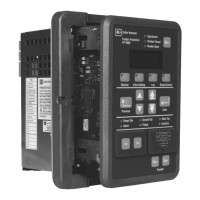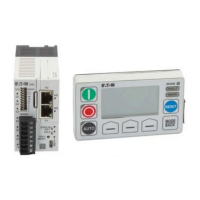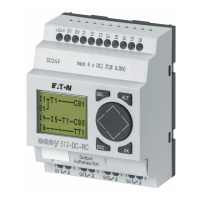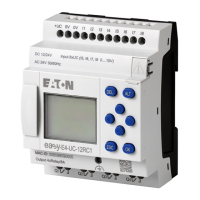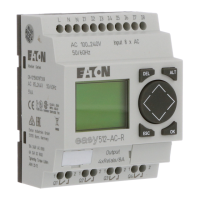Page 70 I.L. 17562
PR 0.3 Effective 8/99
be connected depend on the setpoint programming of the MP-3000 - there is a long list of
functions which can be assigned to each of these inputs.
The engineer designing the installation should study Sections 5 and 9 to understand and
designate the use, if any, of the discrete contact-sensing inputs. Note that only one use can be
assigned to each input.
CAUTION
The discrete inputs should be energized only from 120 Vac. The MP-3000 terminal 6 is always a
source of 120 Vac, which can be used to wet remote contacts, even when the MP-3000 is
powered from 240 Vac.
The discrete input circuits are totally isolated from the other circuits in the MP-3000, and have
their own common connection, terminal 9. If the 120 Vac discrete contact-wetting source from
terminal 6 is used, tie the discrete input common terminal 9 to the ac supply neutral terminal 7,
as shown in Figure 6.7.
Figure 6.8, lower portion, shows an alternate scheme for using a remote contact wetting source.
The source must be 120 Vac. The contact signal(s) and the remote neutral must be brought to
the MP-3000 discrete inputs. For noise immunity and safety, do not connect the discrete
common terminal 9 to terminal 7 or any other nearby neutral if a remote wetting source is in use.
CAUTION
Beware of large shunt capacitance across contacts or in solid-state relays connected to the MP-
3000 discrete inputs. Charging current through the capacitor could cause a false indication of a
closed contact. Keep total capacitance below 0.05 microfarads.
6.2.5 Analog output wiring - Terminals 24 and 25 provide an isolated source of dc current
between 4 and 20 mA, the exact value indicating an internal MP-3000 measurement. This
current source, if used, is typically connected to a remote panel meter or a programmable logic
controller.
The measurement selection is made via MP-3000 setpoint. Choices include motor current;
stator winding temperature; and fill level of the rotor thermal-model bucket between cool level
and trip level. See setpoint P11L1 in Section 5.
The burden of the connected current loop should be less than 1000 ohms.
6.2.6 URTD Wiring - Connect a source of 120 Vac only to the power terminals of connector J3
on the URTD module. Connect either terminal 16 or terminal 32 (but not both) to a non-current-
carrying safety ground.
Figure 6.7 shows connections between the URTD and the MP-3000. Use either the optical fiber
or the electrical 3-wire connection. It is not necessary to connect both. If both are connected,
the MP-3000 will use data from the optical fiber. It will default to the wired connection only if the
fiber is removed or fails.
NOTE
The optical fiber is the much-preferred method of transmitting temperature data from the URTD
to the MP-3000. It is also easier to install.
Preassembled plastic optical fibers with connectors can be ordered from Cutler-Hammer, or from
any distributor of Hewlett-Packard optical fiber products:
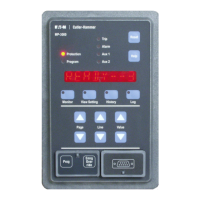
